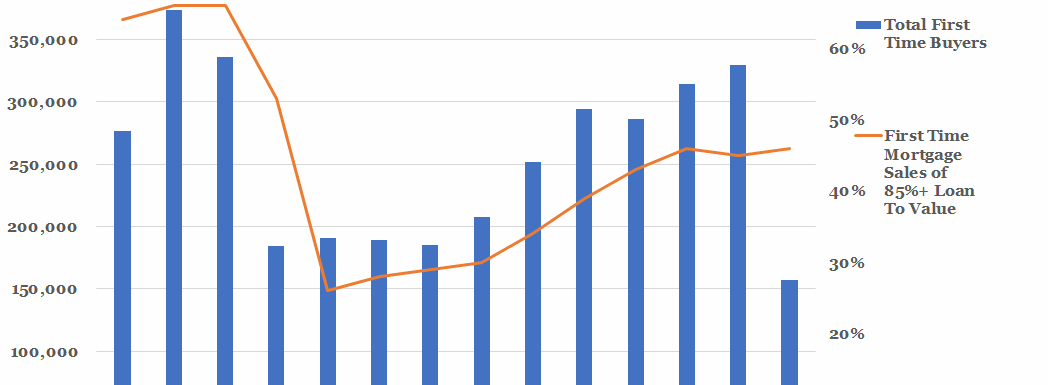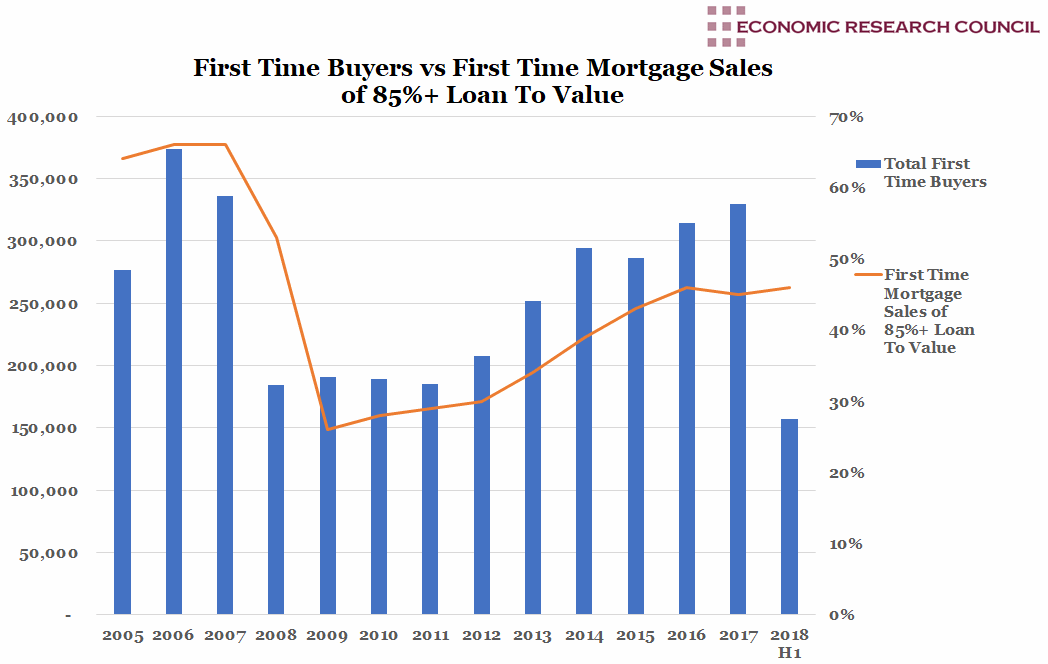Summary
Especially among first time buyers, homeownership is still struggling in the wake of the recession, far from its 1980s peak. However, there are indications that a recovery is possible. Just recently, from 2016-18, rates of home ownership among the youngest demographic (25-34) rose from 25 to 28%. As per analysis by the Resolution Foundation, there are a few reasons for this increase, including the loosening of macroprudential regulations such as Loan to Value ratios.
As indicated by the chart, a larger proportion of new homes are being sold with LTVs which would be considered reasonably high (above 85%). After the crisis the median LTV fell to 75% from in excess of 90% pre-crisis. Now high LTVS appear to be making a return. While this may strike some as a worrying sign of increasingly risky credit growth, it is also an indication welcomed by some that consumers are prepared to assume more risk in consumption and investment and, additionally that the Bank of England is more confident in the health of the UK economy to allow for such a loosening of macroprudential indices.
What does the chart show?
The blue bars show the number of first-time buyers in the UK housing market from 2005-2018H1, plotted on the left hand axis. The orange series plots on the right hand axis the proportion of first-time mortgage sales which have Loan to Value ratios of 85% plus. A Loan to Value ratio (LTV) is a tool of macroprudential policy which controls credit growth. It determines the proportion of a home’s value that can be borrowed, with the remainder to be paid upfront as a deposit.
Why is the chart interesting?
With the backdrop of the lingering housing crisis there is often much discussion of low rates of housing ownership, especially among young people and other potential first-time home buyers. These trends are concerning indicators of stagnating gains from economic growth, increasing precariarity, lower median incomes and income growth, etc. While these concerns are often well founded, some potential signs for optimism have been overlooked.
Terms for first time homebuyers have been increasing in length, allowing for a greater assumption of mortgage debt as it can be defrayed over a longer period. 34% of new mortgages in 2016 had terms greater than 30 years, up from 20% in 2007. 28% have terms between 26 and 30 years, up from 22% in 2007. This indicates more confidence in consumers’ abilities to continue to meet mortgage obligations, even if it means the assumption of liabilities for a longer period on behalf of mortgage providers. Additionally, house price growth has slowed from 9.4% in 2014 to 3% in the first half of 2018, although this story varies by region a great deal.
Optimism must be tempered by consideration of supply side constraints, most of all dwindling housing stock. Since the mid-1990s, housebuilding by local authorities all but ended and building by Housing Associations has failed to grow, constrained by planning policy and NIMBYism. Indeed research by Shelter and KPMG has estimated that a quarter of a million houses are needed annually to meet demand and improve the situation for first time buyers.
Week 1, 2019


